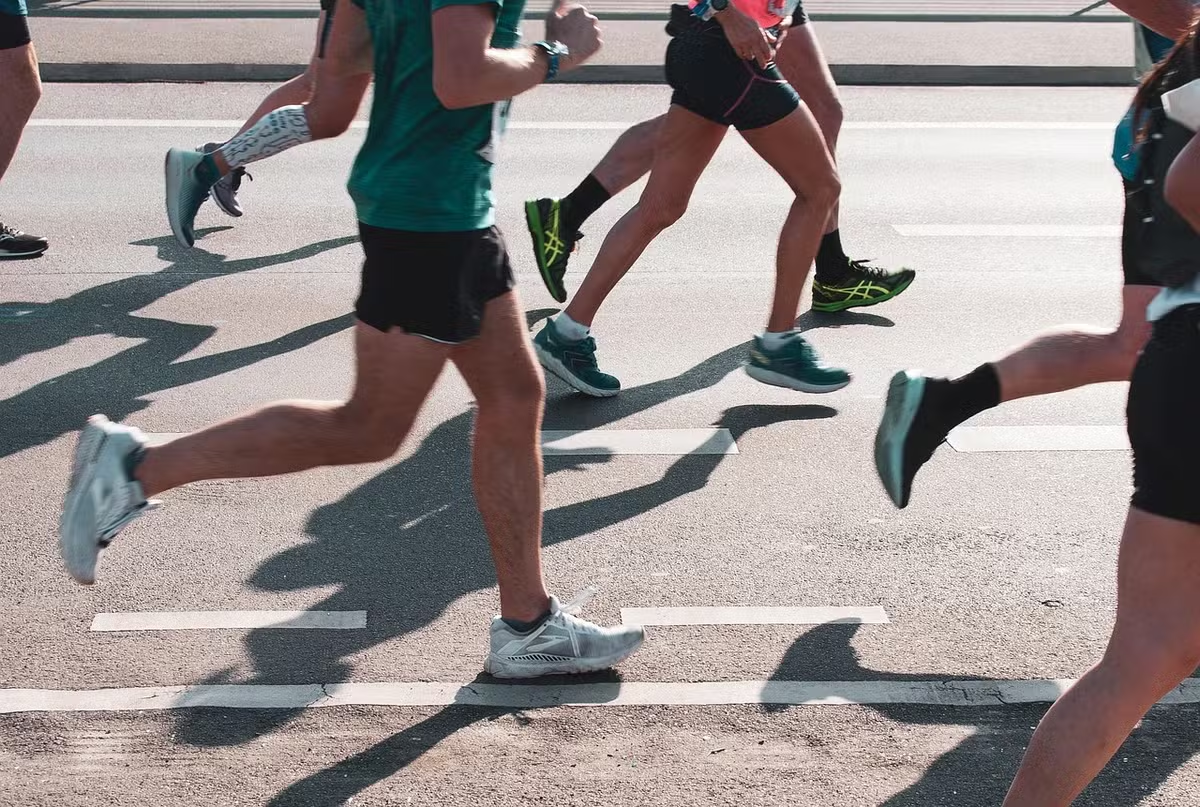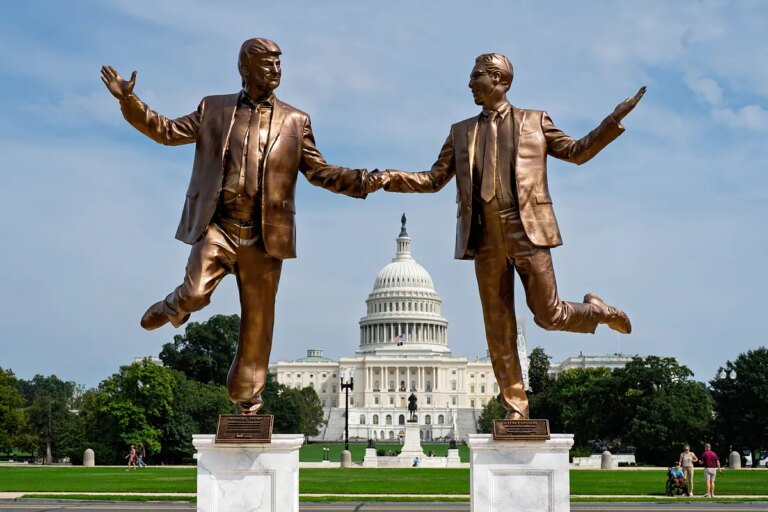
It is often said that effort is perceived as unpleasant, and that we all tend to succumb to the allure of a little effort. But then, how can we explain why so many people devote themselves to things like marathons, even though this physical activity clearly requires effort? Understanding the three stages of effort (before, during, and after) can help combat our natural tendency to laziness.
- Do you know someone who always wakes up in a bad mood? Doctor explains the science behind the problem (and how you can change it)
- Protein gelatin: See 5 recipes trending on social networks
Whether it’s solving a puzzle, climbing a ladder, or doing an intense workout, most of our actions involve effort. How we perceive it affects not only our immediate motivation to act, but also our long-term commitment. Effort, often seen as a cost, can be a major barrier to performing demanding tasks, whether physical or mental.
Effort is an important element of our behavior
In a world where environments increasingly allow us to minimize effort, research has long considered effort to be a cost to be avoided. From this point of view, we formulated the Theory of Effort Minimization in Physical Activity (TEMPA, in English: Minimization of Effort Theory in Physical Activity). According to this, we are naturally prone to some kind of physical laziness.
However, this vision was incomplete. In the same context, why is it that some of us regularly, sometimes excessively, devote ourselves to physical activity, while others have difficulty translating good intentions into action?Some studies have shown that effort, while often viewed as abhorrent, can be a source of motivation and enjoyment for some people and in some situations.
This contrast illustrates the “paradox of effort.” Effort is perceived as both a cost and a value. To better understand this paradox and enrich TEMPA theory, we proposed in a recent publication to distinguish three key stages in which the perception of effort specifically influences behavioral regulation: pre-action, during-action, and post-action.
Before moving your body: Predict that your action will be delayed.
Before we act, our brain analyzes whether the benefit is worth the effort. Therefore, most people automatically tend to avoid physical activity when climbing stairs or using escalators.
Under laboratory conditions, participants also show a spontaneous preference for actions that require less effort, even if they are not consciously aware of the difference. In everyday life, this is reflected in very concrete actions. Over 90% of people would choose an escalator over traditional stairs if given the choice.
However, real life cannot be reduced to comparing only the effort taken. Rigorous activities such as running, dancing, and gardening, as well as mentally demanding activities such as crosswords, chess, and Sudoku, are chosen for rewards such as joy, pride, happiness, and a sense of accomplishment. In these cases, prior effort can sometimes be a hindrance, but it’s usually not enough to stop someone from working on what they want to do.
- “Human influenza”: Do men really exaggerate their symptoms when they get the flu? American doctors have the answer
During exercise: save energy
Once we participate in an activity, we strive to limit our energy consumption and reduce the effort we expend while achieving our goals. For example, when you are running to catch a bus, you slow down as soon as you are sure you can catch up. This mechanism inherited from evolution is part of our evolutionary legacy that is important for survival.
This energy-saving mechanism emerges in early childhood. Young children change from an awkward gait to a fairly efficient one. In the lab, researchers are even equipping adults with exoskeletons (robotic structures attached to their legs) to make normal walking more energy-intensive. The researchers observed that adults quickly readjusted their walking frequency and length to reduce the effort required, even if energy savings were minimal.
This result highlights how our motor system adapts to environmental constraints and converges to an energetically optimal state. In elite runners, stride, arm movement, and force distribution are finely tuned, and this strategy proves important for both athletic performance and broader survival. Therefore, minimizing effort does not mean refusing effort, but rather using it wisely, in order to achieve the goal without wasting energy.
After effort: perceived reward increases
After an effort, if it demands a lot from us, we tend to value the result even more. Imagine climbing a mountain with your own feet. The sense of accomplishment makes the scenery even more spectacular. No matter how beautiful it is, cable car rides tend not to create very strong memories. This effect is called the “IKEA effect” and refers to the satisfaction you feel when you assemble furniture yourself.
This is also evident in the laboratory. When participants choose between light or intense tasks to earn a reward, brain activity associated with reward pleasure is greater after intense effort.
- Science of weight loss: Why are our brains designed to keep gaining weight?
This phenomenon, called effort rationalization, is a form of cognitive dissonance described by psychologist Leon Festinger more than 60 years ago. To reduce the discomfort caused by difficult tasks, we value the obtained results more highly. This helps us understand the paradox of effort. Although we try to avoid effort, we may seek it out if it suggests the possibility of greater reward.
Exploring the dynamic role of effort in driving difficult tasks
By acting on the three stages of effort, you can reshape your perceptions and encourage regular practice of physical activity, among other behaviors.
Adjusting your expectations before you put in the effort can reduce your fear of “overestimating” the effort required. Short initiation sessions, individualized feedback, and gradual progression can help adjust perceptions, especially for sedentary people. However, you need to be careful. Too much underestimation of effort can lead to disappointment and decreased motivation.
If, during an effort, we divert our attention from unpleasant sensations (fatigue, discomfort) by using external elements, such as music or pleasant scenery, or by mentally projecting ourselves elsewhere, the perception of effort will be reduced and our emotional state will improve. Tailoring the intensity, duration, and type of exercise to a person’s preferences can also make the experience more positive.
After an effort, it is important to reinforce the perception of accomplishments and immediate benefits, such as feeling better, having more energy, increased vitality, and a sense of well-being. Systematically linking effort to these rewards creates a virtuous cycle that encourages persistence.
Even more effective than emphasizing long-term, even real health benefits, these positive emotional experiences serve as one of the main drivers for maintaining an exercise habit.
Can we learn to love our efforts?
Efforts that are often considered costs can also increase the perceived value of a particular activity, especially if the activity produces tangible benefits. This type of association may explain why some people value demanding jobs, whether mentally or physically, more than others.
The theory of “learned diligence” suggests that even simple rewards such as encouragement can reward effort when combined with repeated rewards. Research has shown that participants who are rewarded for a difficult task are more likely to continue with other efforts even after receiving the reward.
- nap: How many hours should it last? Who should avoid it? Experts answer
But can effort itself be a reward? From an evolutionary point of view, saving energy is essential and it seems logical to choose the most economical option. Seeking unprofitable endeavors can be counterproductive and can even lead to pathological conditions (addiction, anorexia). Effort is valued more when it is associated with positive experiences (pride, feelings of competence). Therefore, what is rewarding is not the effort itself, but what it accomplishes, no matter the cost.
learn to reap the benefits of effort
Effort guides our actions at every step of the way. Rather, our efforts shape our decisions. Meanwhile, it regulates how we distribute energy. The resulting value will then increase.
By adjusting this dynamic, recalibrating expectations, reducing discomfort in the moment, and reinforcing rewards, we can turn effort into a driver of ongoing engagement and even foster enjoyment of it. Rather than suffering the cost of our efforts, we learn how to make the most of them and better realize the benefits they bring.
*Boris Cheval is an associate professor at the École Normale Supérieure of Rennes, France.
*Florent Desplanques is a physical education teacher at the École Normale Supérieur of Rennes, France.
*Silvio Maltagliati is a full professor at the University of Southern Brittany, France.
*This article is republished from The Conversation under a Creative Commons license. Please read the original.



